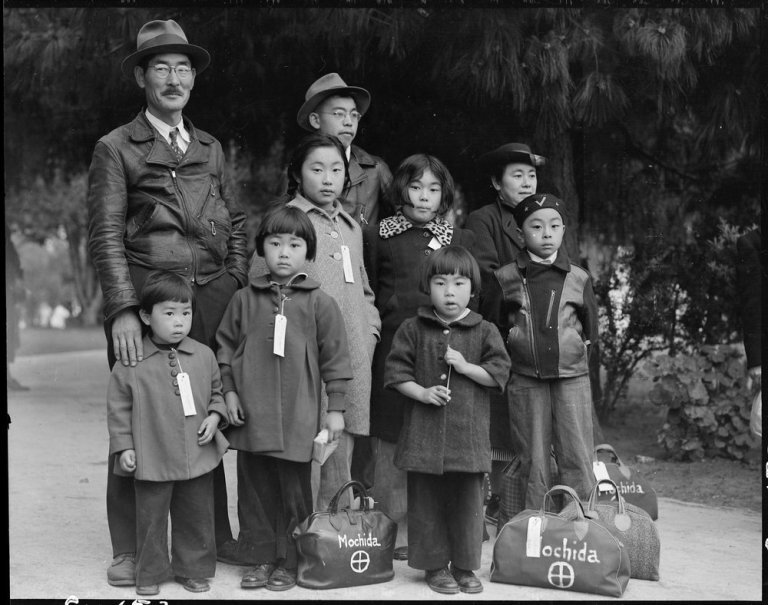Film review: And Then They Came for Us, with George Takei, tells the human experience of Japanese imprisonment during World War II
The documentary features newly discovered black-and-white images by photojournalist Dorothea Lange
Family photo by Dorothea Lange.
And Then They Came for Us screens at KDocsFF 2021 from March 12 to 21 online. The opening night special presentation, March 12 at 7 pm PST, features a live Q&A with George Takei and address by keynote speaker Diana Morita Cole.
ACTOR AND ACTIVIST George Takei was just a child when he, his two siblings, and parents were forced from their home at gunpoint by the U.S. military. They were among nearly 120,000 people of Japanese ancestry, many American citizens, whom Franklin D. Roosevelt ordered be relocated in response to the bombing of Pearl Harbor. They were taken first to horse stables, each family assigned a single, foul-smelling stall. For Takei’s mother and father, it was a degrading, extraordinarily painful experience.
To this day, many people refer to the measures associated with Executive Order 9066 in terms like “evacuation” rather than forced removal and “assembly centres” instead of prison camps. Surrounded by barbed wire and armed guards, Japanese families spent years treated as criminals in one of the country’s most atrocious affronts to human rights.
And Then They Came for Us reveals what life was like for those individuals, leading up to the instant they had to walk away from their homes to get on buses wearing their Sunday best, numbered tags around their necks—the moment when their lives changed forever—and throughout their time in barracks.
Featuring interviews with Takei, other survivors, and survivors’ grown children, Abby Ginzberg and Ken Schneider’s feature-length documentary is a vivid account of the human experience of that terrible period, bolstered by newly discovered black-and-white photographs by Dorothea Lange. It also highlights images by Ansel Adams and prisoner Tōyō Miyatake, who built his own box camera and whose pictures include an iconic shot of a little boy gazing outward with his finger tips resting on barbed wire.
Without these photos, the reality and horror of Japanese incarceration would be that much harder for people to grasp, today and in the future. From babies to the very elderly, the images convey so much stress, fear, and despondency—as well as resilience, fortitude, and determination. Lange, Adams, and Miyatake all found ways to circumvent the government’s directive to not show soldiers, tanks, or sentry towers; with or without those elements in their images, they captured humanity amid despair and injustice.
And Then They Came for Us takes viewers from one troubling chapter in U.S. history to another. It touches on anti-Muslim sentiment set off by 9/11 and Donald Trump’s 2015 call for a total and complete shutdown of Muslims entering the United States. Takei led the response among everyday people to stand in solidarity with Muslim Americans, to protest the Muslim registry, with Japanese-Americans right by their fellow countrypeople’s sides.
Set to an original score by composer Tatsu Aoki, And Then They Came for Us reminds that never again means now.














